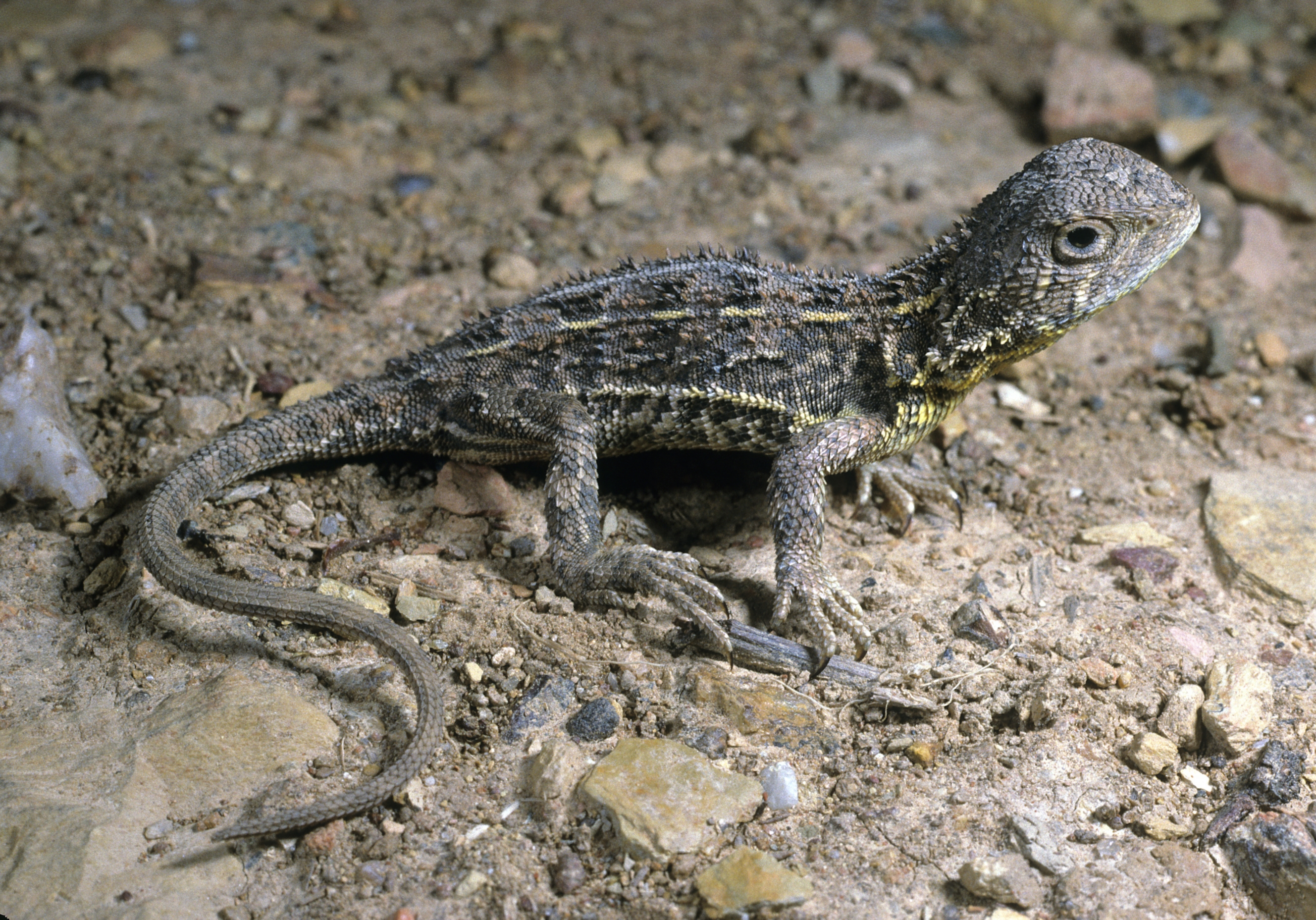The Victorian grassland earless dragon, Tympanocryptis pinguicolla, made a stunning comeback from the dead when it was sighted this year for the first time since 1969. Conservationists were excited, but know the little lizards are unlikely to survive much longer without assistance, so they have enlisted the help of Colossal Biosciences, the company seeking to restore the mammoth and the thylacine.
Life’s tough if you’re a dragon that can neither fly nor breathe fire. At least 23 species of earless dragons existed when Europeans arrived in Australia, but a combination of habitat destruction and introduced predators has put some in dire straits. There had been no confirmed sightings of T. pinguicolia in Victoria for more than 50 years, and not even unconfirmed ones for more than 30. However, its extinction was considered to only be local, until a 2019 investigation revealed populations further north belonged to other species.
After four years of being considered a former dragon, living T. pinguicolia were spotted in a secret location in its Victorian homeland. Museums Victoria, already running a breeding program for the Canberra cousins once thought to be part of the same species, have made keeping it alive a priority.
Zoos Victoria have an impressive record of breeding species in captivity that others have not managed, and collected some of the 15-centimeter (6-inch) long dragons for an insurance program. Having bred enough of the Canberra grassland earless dragons in the hope of future releases, they hope to do the same with the Victorian counterpart. If the Canberra equivalent is anything to go by, it’s not all easy.
“Often the female will be dominant, and she can be quite picky in terms of the male,” Project Manager John Lawson told the ABC. Sensible life choices, not so great when the dating pool is this limited.

The Canberra grassland earless dragon is so similar to the Victorian one that for 50 years they were thought to be the same species, leading to false confidence about their population status.
With a population this small and vulnerable there’s a need for mothers and fathers of dragons, and Colossal are stepping in. Besides pledging money to support the Zoos Victoria program, Colossal have offered to assist with sequencing the dragon’s genome. This may enable a better understanding of the relationship between the Victorian grassland earless dragon and its closest relatives, and potentially provide clues on how to keep them alive.
“We’re starting to leverage some of the cutting-edge technologies that Colossal has built towards a partnership with zoos and governments in order to protect endangered species,” Colossal’s Matt James told the Guardian.
The work should be much less controversial than Colossal’s main focus. Many scientists and philosophers have criticized the idea of de-extinction, particularly of mammals, as unrealistic and a distraction from the task of saving living species.
Specific concerns have been raised about each of the headline projects, to bring back the mammoth and the thylacine. In the first case some consider forcing elephants to carry the young of another species cruel, while in the latter the lack of biological diversity of thylacine specimens means a new population would be prone to severe inbreeding.
Those concerns will not apply to the dragons, particularly if further surviving populations can be found to expand the gene pool so they don’t have to breed with their siblings.
Source Link: Biotech Company Seeking To Revive Mammoths Turns To Saving Dragons First